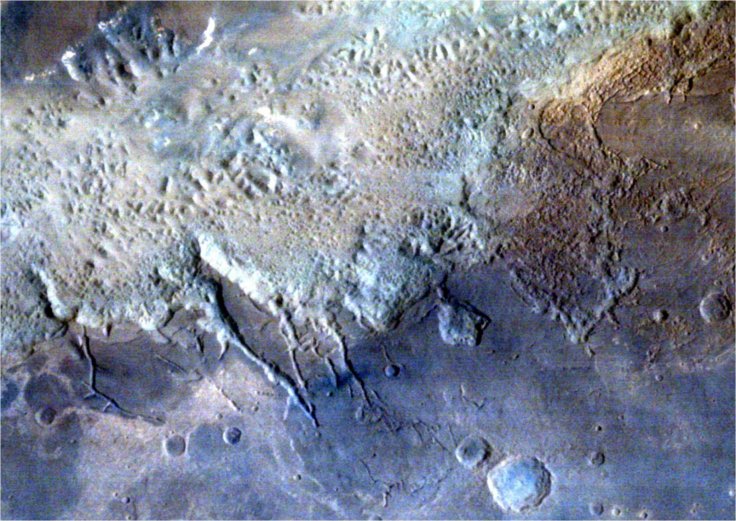
Scientists have discovered eight geological features, called scarps, on Mars. Surprisingly, these scraps are hiding thick ice sheets just under the surface of the Red Planet.
According to experts, these ice slopes, which are exceptionally steep, could be significant for the future studies of the planet and they can also prove to be useful for astronauts when they reach Mars.
"We've found a new window into the ice for study, which we hope will be of interest to those interested in all aspects of ice on Mars and its history," stated the lead author of the study, Colin Dundas from the U.S. Geological Survey's Astrogeology Science Center, Arizona, reported NASA. The study was published in Science.
We already know that Mars is an icy cold planet. The Mars Odyssey spacecraft discovered telltale signs of hydrogen on the planet in 2001, which was an indication that the planet once had a huge quantity of ice. However, it couldn't really disclose the depth and amount of that ice.
Now, the latest Mars Reconnaissance Orbiter studied its surface and clicked detailed pictures with the help of the High-Resolution Imaging Science Experiment (HiRISE) camera. Dundas along with his team located ice in glaciers, ice sheets and the small craters using those pictures. "The high-resolution data has greatly improved our understanding of various ice-related landforms," Dundas said.
As per NASA, these 300-feet-thick ice sheets were most probably dumped as snow years ago. Not only these sheets reveal clues about the Red Planet's climatic history, but they may also make more frozen water available than it was thought until now based on some missions to Mars.
"The discovery reported today gives us surprising windows where we can see right into these thick underground sheets of ice. It's like having one of those ant farms where you can see through the glass on the side to learn about what's usually hidden beneath the ground," said Shane Byrne, who is a co-author of the study and also a member of the University of Arizona Lunar and Planetary Laboratory in Tucson.
Scientists confirmed that the bright element is indeed frozen water using MRO's Compact Reconnaissance Imaging Spectrometer for Mars (CRISM). Thermal Emission Imaging System (THEMIS) camera of Odyssey also made the researchers verify that those ice sheets were not just some light-weight frost over the planet's land. "At some of them, the exposed deposit of water ice is more than 100 yards, or meter, thick," said NASA.
Also Read: Japanese astronaut claims to have grown 9-cm taller in space; How true is his claim?
This study is more significant because it actually identified at least eight locations on Mars, from where ice can be gathered with much lesser difficulties than other areas. "Astronauts could essentially just go there with a bucket and a shovel and get all the water they need," suggested Byrne.









